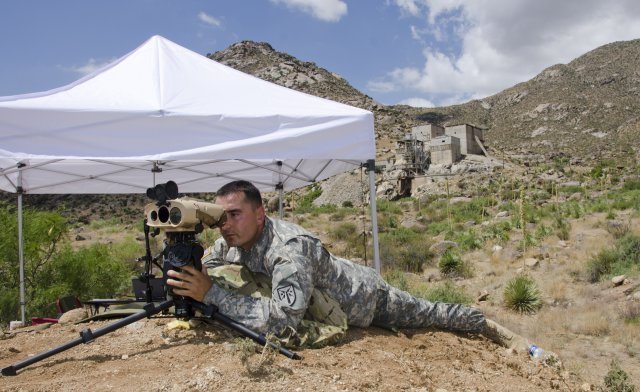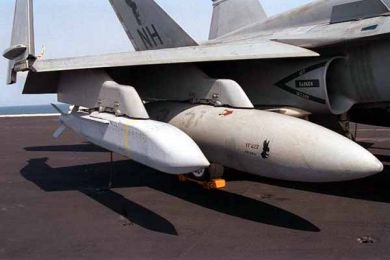The U.S. Army’s Rapid Equipping Force, in partnership with PEO Soldier, along with PEO Soldier’s Project Management Office PM Soldier Sensors and Lasers, conducted a test in the mountains overlooking White Sands Missile Range, in mid-July.
This test was to evaluate the capabilities of a developmental Hand Held Precision Targeting Device, or HHPTD, a special targeting system that allows Soldiers to engage targets with precision munitions and provide digital connectivity to related units. This Rapid Equipping Force capability is intended to serve as an interim capability for Soldiers while the Joint Effects Targeting System is being developed.
The mountainous terrain and wide ranging temperatures at White Sands Missile Range, or WSMR, make it an ideal testing location for systems such as the HHPTD which require changes in elevation or blocking terrain to accurately gauge the technology’s capabilities.
“This terrain provides an outstanding environment to test the HHPTD under conditions and atmospheres very much like where we intend to deploy the system,” said Captain Dave Rolen, an acquisition officer with Special Operations Command. “We can see the proper ranges, and the proper elevations, and elevation changes from a high point of view down to a low point of view, or up to the side of the canyons and mountains up here.”
The evaluation and usage of the HHPTD in an operational relevant environment like WSMR, and its eventual deployment through the Rapid Equipping Force, will provide capabilities to Soldiers downrange, while informing the larger Joint Effects Targeting System program of record. This is a potentially joint U.S. Army, U.S. Air Force and U.S. Marine Corps program to develop and field a one-man portable precision targeting system.
The goal is to reduce friendly fire and collateral damage by improving the ability of the Soldiers to differentiate between enemy combatants and non-combatants operating in very close proximity to one another.
To best evaluate the Soldier capabilities of a targeting system, Soldiers at WSMR tested a variety of technologies in varying terrain and temperatures, while recording observations and data in order to help set specific, detailed development goals and objectives for the program. Meeting specified requirements is important, but including Soldiers early in the evaluation process ensures acquisition professionals meet Soldiers’ needs to develop suitable equipment.
These “Soldier touch-points” are critical to developing equipment that Soldiers trust and will use in combat.
“Testing at WSMR gives us a better idea of how a system will work when deployed to theater,” said one Soldier involved with the test. “I was able to really get a feel for how the technologies would be employed downrange.”
It is for this reason that WSMR, an Army Test and Evaluation installation, continues to offer Army organizations like PEO Soldier, an ideal location to test and develop equipment. A regular presence allows for technology demonstrations and evaluations in a wide range of environments, from ordinary field conditions to extreme climates.
The similarity between WSMR and the current theater of combat operations enables a more realistic testing environment, resulting in better material solutions being developed for the Soldier.











